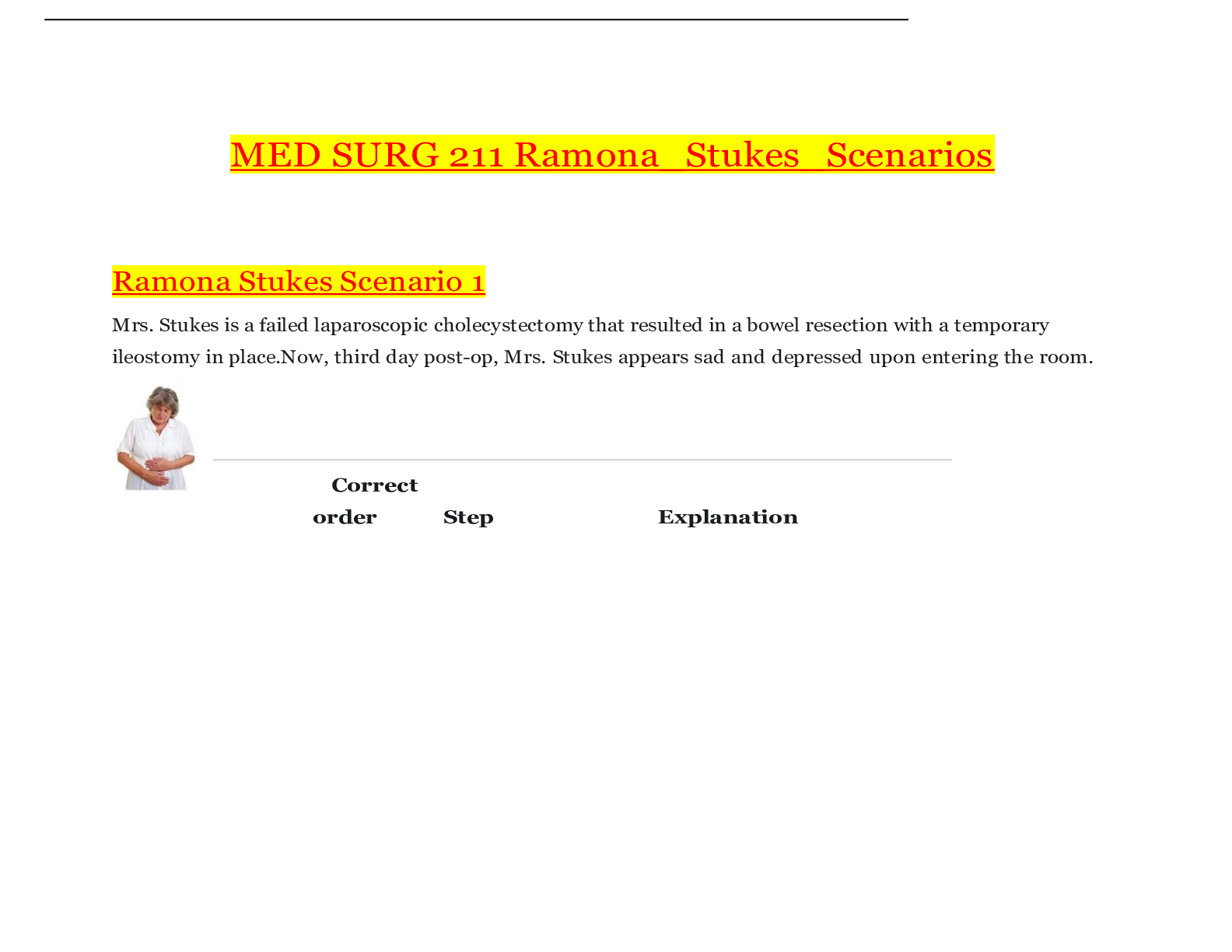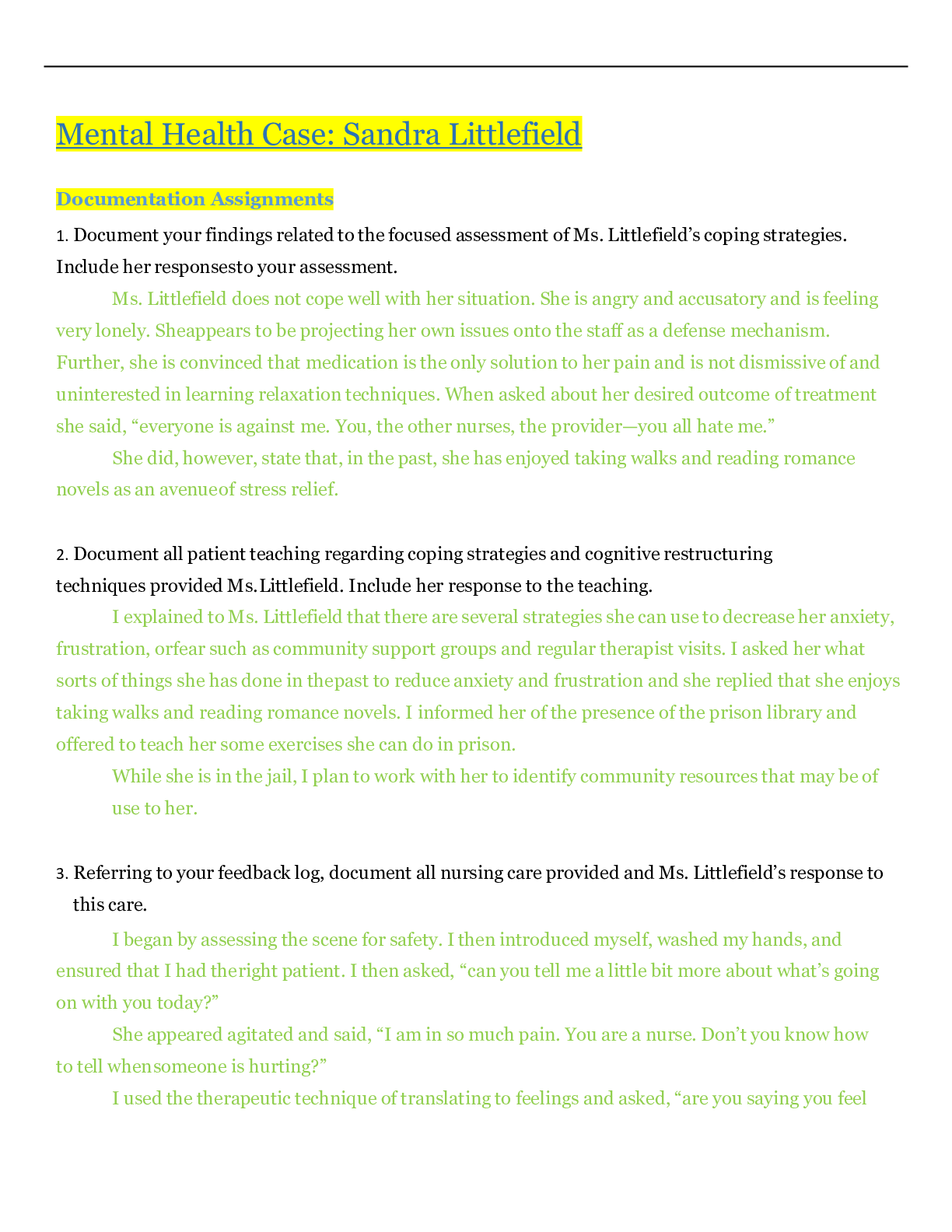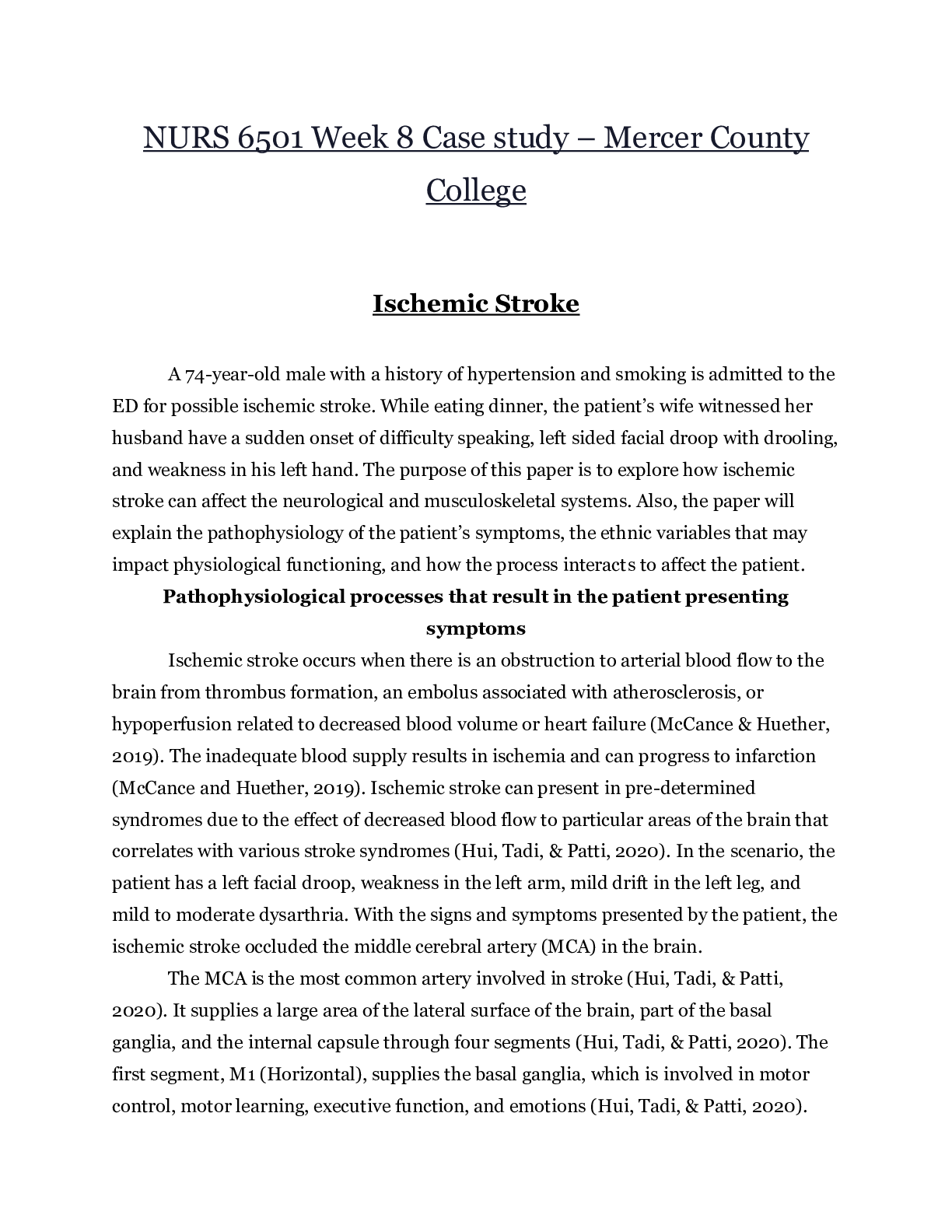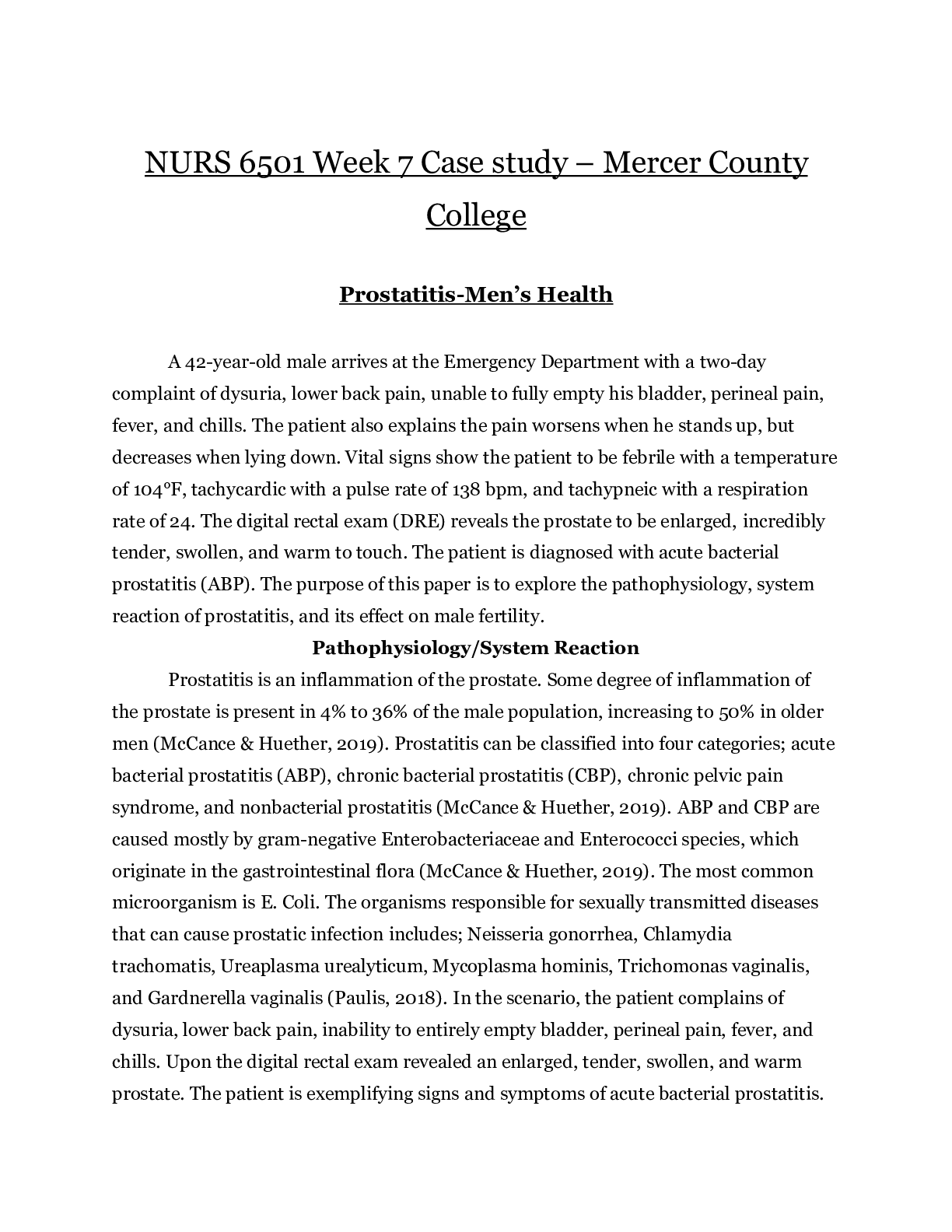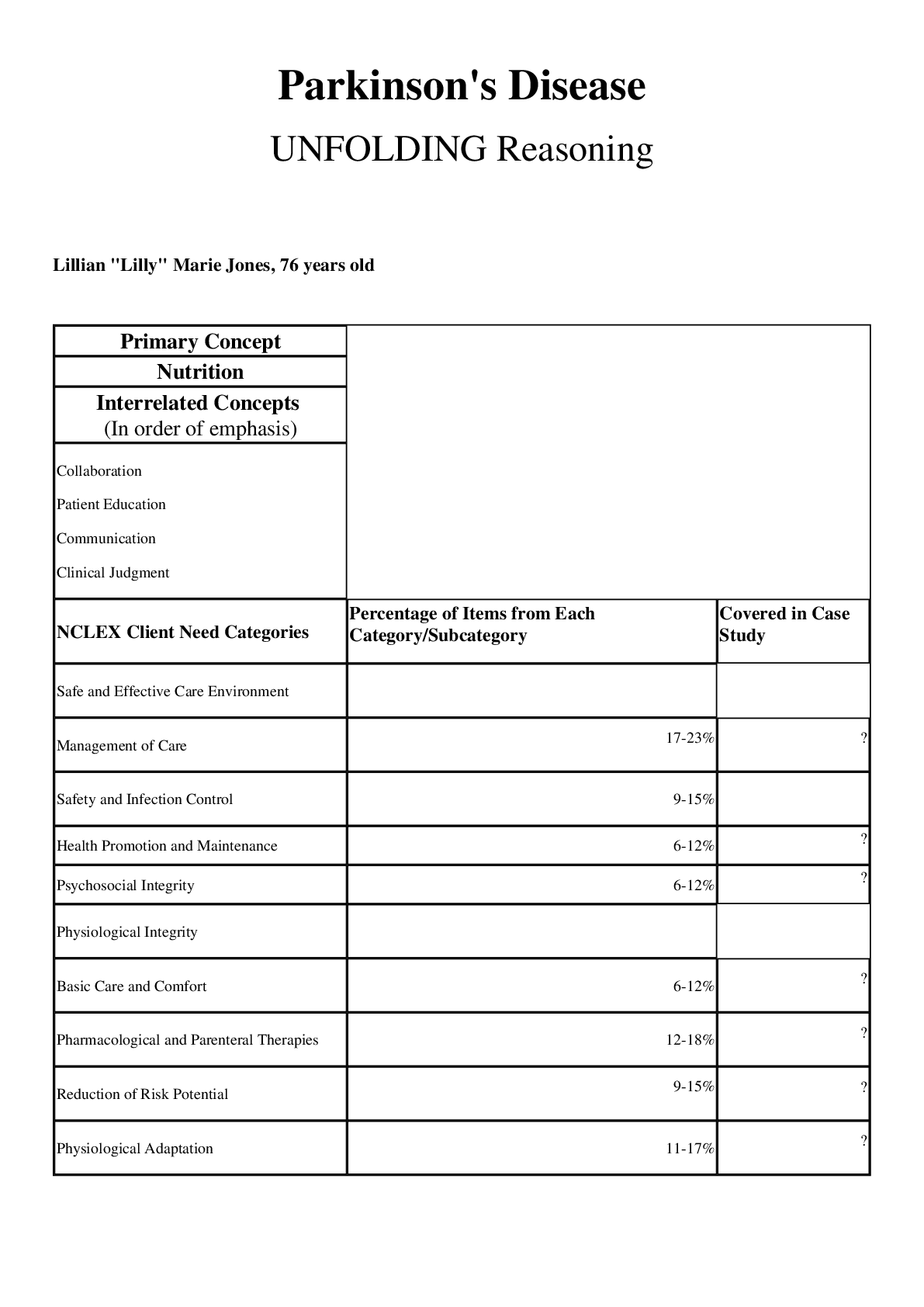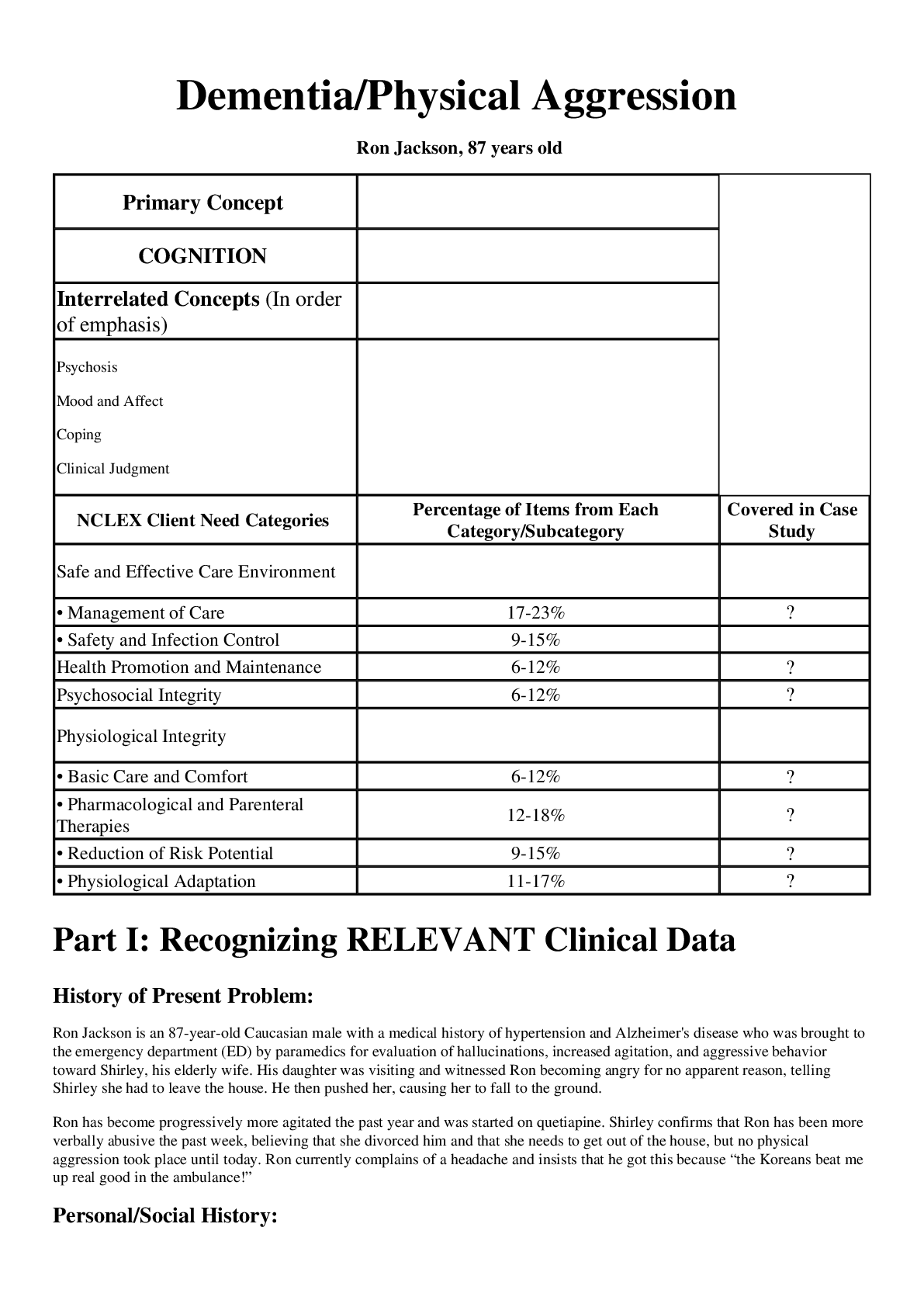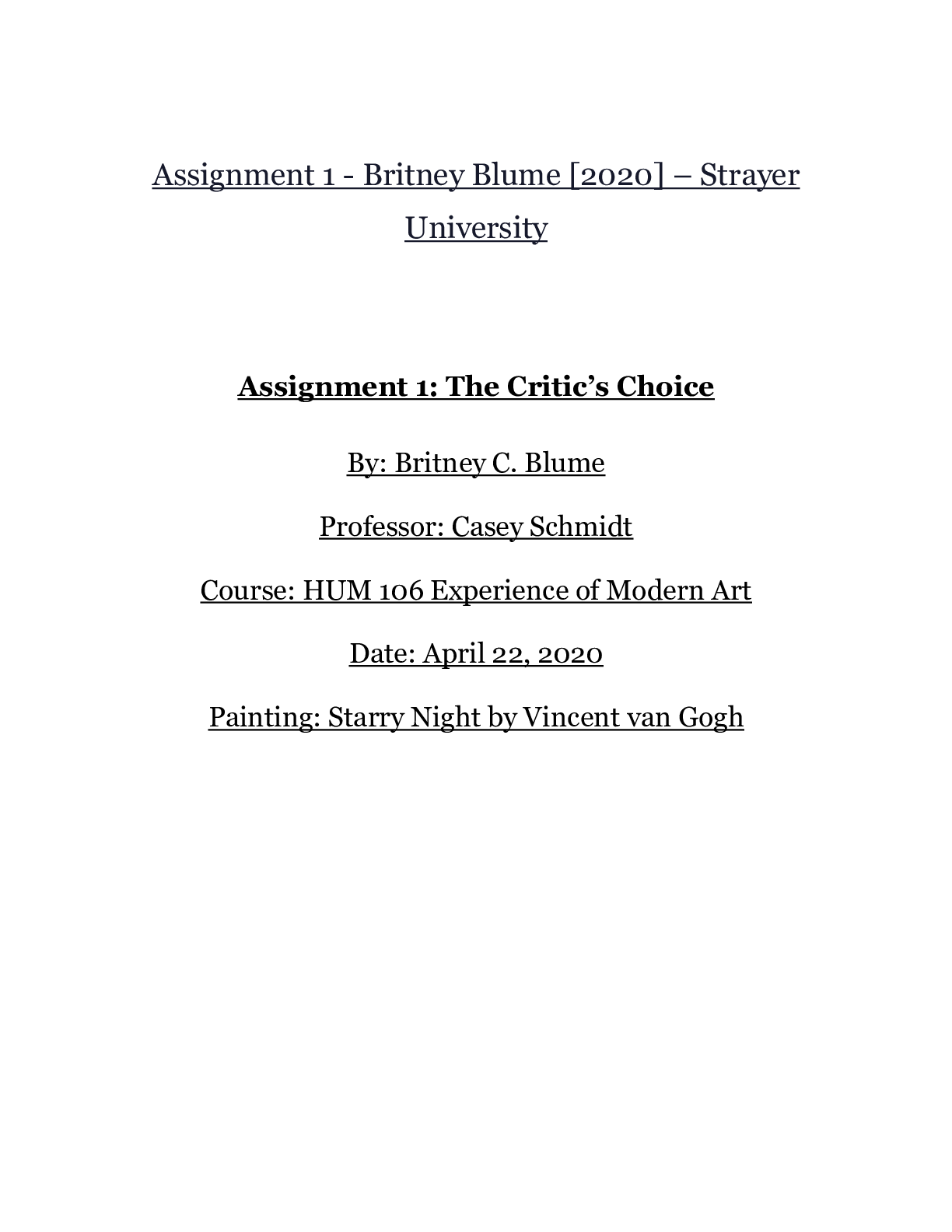*NURSING > CASE STUDY > Joan Walker _ Pneumonia_Case_Study_Basic_Week_2 {UPDATED} | NURS 1140 Pneumonia_Case_Study_Basic_Wee (All)
Joan Walker _ Pneumonia_Case_Study_Basic_Week_2 {UPDATED} | NURS 1140 Pneumonia_Case_Study_Basic_Week_2 - Keiser University
Document Content and Description Below
Pneumonia-COPD Joan Walker, 84 years old Primary Concept Gas Exchange Interrelated Concepts (In order of emphasis) 1. Infection 2. Acid-Base Balance 3. Thermoregulation 4. Clinical Judgemen... t 5. PainHistory of Present Problem: Joan Walker is an 84-year-old female who has had a productive cough of green phlegm that started four days ago that continues to persist. She was started three days ago on prednisone 40 mg PO daily and azithromycin (Zithromax) 250 mg PO x5 days by her clinic physician. Though she has had intermittent chills, she had a fever last night of 102.0 F/38.9 C. She has had more difficulty breathing during the last night and has been using her albuterol inhale every 1-2 hours with no improvement so she called 9-1-1 and is brought to the emergency department (ED) where you are the nurse who will be responsible for her care. Personal/Social History: Joan was widowed six months ago after 64 years of marriage and resides in assisted living. She is a retired elementary school teacher. She called her pastor before coming to the ED and he has now arrived and came back with the patient. The nurse walked in the room when the pastor asked Joan if she would like to pray. The patient said to her pastor, “Yes please, I feel that this may be the beginning of the end for me!” What data from the histories is RELEVANT and has clinical significance to the nurse? RELEVANT Data from Present Problem Clinical Significance: Productive cough of green phlegm four days ago that persists. Started three days ago on prednisone 60 mg PO daily and azithromycin 250 mg PO x5 days by her clinic physician. Fever last night of 102.0 More difficulty breathing during the night and has been using her albuterol inhaler every 1-2 hours with no improvement Productive cough is a clinical manifestation. Sputum in shades of yellow- green indicates bacterial infection. This respiratory infection was treated by an antibiotic and steroids. Nurse determine if treatment was effective, Response to bacterial infection. Inflammatory response. Recurrent pneumonia is a common complication of COPD and a frequent cause of COPD exacerbation RELEVANT Date from Social History Clinical Significance She called her pastor and he has now arrived and came back with the patient. The nurse walked in the room when the pastor asked Joan if she would like to pray. The patient said, “Yes, this may the beginning of the end for me!” Joan values spirituality. Spirituality is important to patient and the nurse must be sensitive Emotional support will be a priority for diseasePatient Care Begins: Current VS: P-Q-R-S-T Pain Assessment (5th VS): T: 103.2 F/39.6 C (oral) Provoking/Palliative: Deep breath/Shallow breathing P: 110 (regular) Quality: Ache R: 30 (labored) Region/Radiation: Generalized over right side of chest with no radiation BP: 178/96 Severity: 3/10 O2 sat: 86% 6 liters n/c Timing: Intermittent-lasting a few seconds What VS data is RELEVANT and must be recognized as clinically significant by the nurse? RELEVANT VS Data Clinical Significance: T: 103.2 F/39.6 C (oral) P: 110 (regular) R: 30 (labored) BP: 178/96 O2 sat: 86% 6 liters n/c Pain: 3/10, ache, generalized over right side of chest with no radiation, intermittentlasting a few secs Elevated due to infection Elevated due to stress Elevated due to Pneumonia/COPD Elevated due to anxiety and stress Elevated O2 is contraindicated in patients with COPD Pain level still should be assessed and monitored, Current Assessment: GENERAL APPEARANCE: Appears anxious and in distress, barrel chest present RESP: Dyspnea with use of accessory muscles, breath sounds very diminished bilaterally and/post with scattered expiratory wheezing CARDIAC: Pale, hot & dry, no edema, heart sounds regular—S1S1, pulses strong, equal with palpation at radial/pedal/post-tibial landmarks NEURO: Alert & oriented to person, place, time, and situation (x4) GI: Abdomen soft/non-tender, bowel sounds audible per auscultation in all 4 quadrants GU: Voiding without difficulty, urine clear/yellow SKIN: Skin integrity intact, skin turgor elastic, no tenting present What assessment data is RELEVANT and must be recognized as clinically significant by the nurse? - - - - - - - - - - - - - - - - 8. What nursing interventions will you initiate if this complication develops? Respiratory failure • Contact respiratory therapy stat to place on bipap • Call a code if continues to decompensate to facilitate needed intubation Sepsis/septic shock • Call “Rapid Response” if team available in facility • Establish second IV, preferably a large bore IV (18 g). • Obtain VS every 15 minutes to TREND closely. • Contact primary care provider as soon as change in status is identified as well as need to transfer to ICU. • Initiate IV bolus of at 9. What psychosocial needs will this patient and/or family have that will need to be addressed? • Knowledge and education about what is taking place • Emotional support • Spiritual support 10. How will the nurse address these psychosocial needs? Knowledge and education regarding illness and plan of care - The nurse can integrate patient/family education naturally while providing care by simply explaining at their level everything that the nurse/physician has ordered and why it needs to be done. Spiritual Support - Spiritual care/support will be limited to encouragement, providing hope, and determining if the patient would like to have a chaplain or their spiritual leader notified. Emotional support -Being present and available for the patient and their family - Once admitted, it would be appropriate to ask open-ended questions to assessCaring and the “Art” of Nursing 1. What is the patient likely experiencing/feeling right now in this situation? The patient is probably anxious and. Supporting the patient and family by giving them as much information about their current status and explaining the plan of care is important . 2. What can you do to engage yourself with this patient’s experience and show that she matters to you as a person? Acknowledging Joan spiritually an offering support. Use Reflection to THINK Like a Nurse Reflection-IN-action (Tanner, 2006) is the nurse’s ability to accurately interpret the patient’s response to an intervention in the moment as the events are unfolding to make a correct clinical judgement. 1. What did you learn from this scenario? I learned that Pneumonia and COPD are critical diseases and should be assessed frequently 2. How can I use what has been learned from this scenario t improve patient care in the future? I will use this to help me in the future create a care plan for Pneumonia and COPD patients and use my new knowledge to support the patient. Brandi Griffin [Show More]
Last updated: 2 years ago
Preview 1 out of 12 pages

Buy this document to get the full access instantly
Instant Download Access after purchase
Buy NowInstant download
We Accept:

Reviews( 0 )
$12.00
Can't find what you want? Try our AI powered Search
Document information
Connected school, study & course
About the document
Uploaded On
Feb 21, 2021
Number of pages
12
Written in
Additional information
This document has been written for:
Uploaded
Feb 21, 2021
Downloads
1
Views
154




